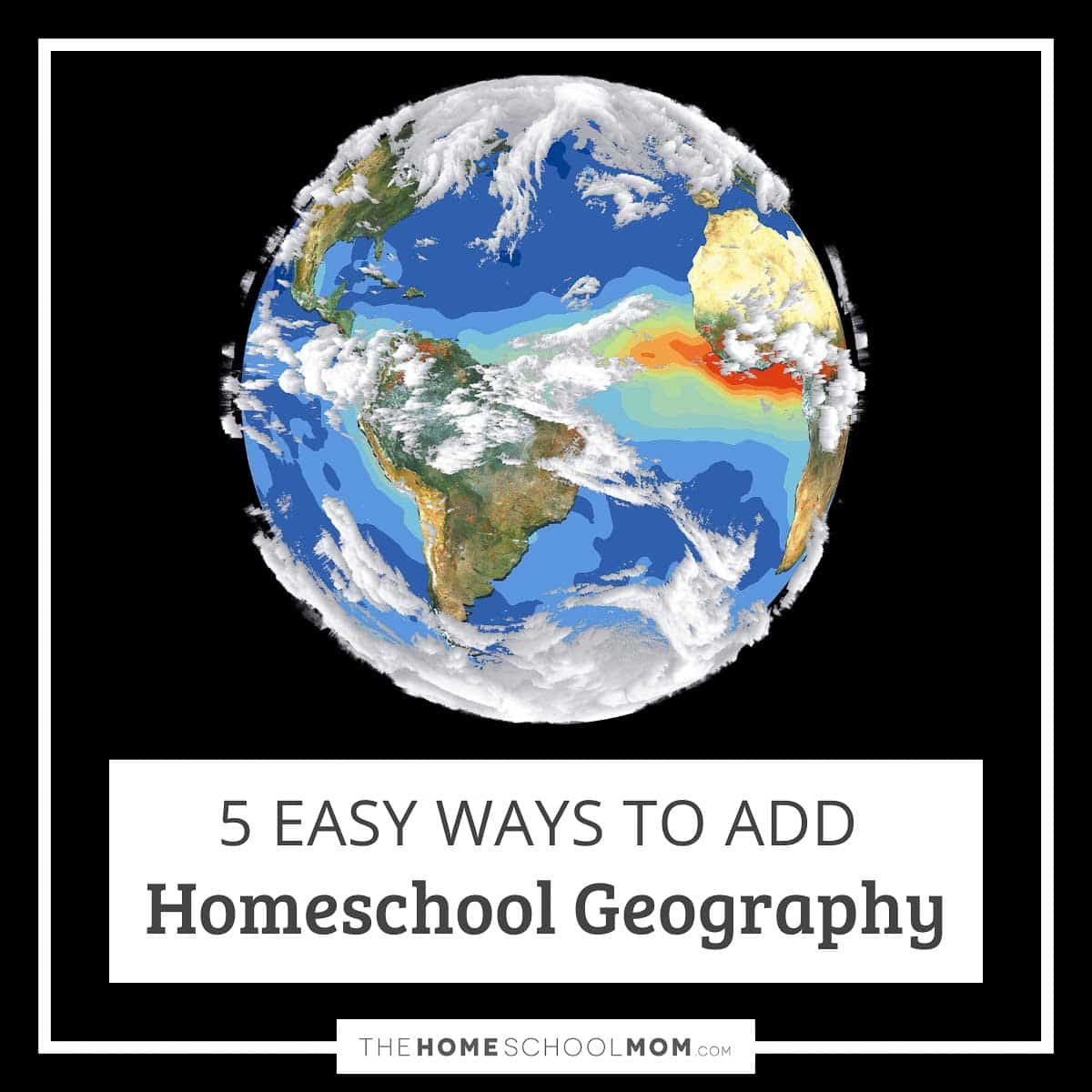Geography is one of the most overlooked subjects in traditional public schooling and in homeschooling. Why? It is probably because it doesn’t seem very important to our everyday, busy lives.
Do my students really need to know where Liberia is located? How about Chile? Is this relevant information or should we just spend a little more time with math, history and writing?
Geography is very important to learn and will help your children immensely as they grow into compassionate adults who care not only for themselves, but for the people around them, both locally and globally.
So, how can we add in some geography to our school week in a fun and yet easy way? Here are 5 very easy and even enjoyable ways to learn more about our globe without compromising your other studies or losing your kids to utter boredom. In fact, learning geography will enhance nearly every other subject area that your students are studying.

1. Mark It on the Map
When you study a place, a person or an event, mark it on your wall map. If you do not have a wall map of the world, pick one up inexpensively at Cosco, Borders or Walmart. Thumb tack it to your wall.
Let’s say that you are studying Louis Pasteur in science. Using a colored marker, place a dot on Dole, France (where he was born) or Paris, France (where he lived and died) and mark the location with his name.
You can do this with almost any location information that you read about during your normal course of studies.
2. Color an Outline Map
Perhaps you would like to take this one step further and actually see what the map looked like at a particular period in time. Purchase or search online for a set of historical outline maps. As you study various events in history, print out an appropriate map for your students to label and color while you read their history text to them.
Here’s an example using a map of the Napoleonic Wars. When studying the life of Napoleon, print out the maps at the link below. Have your students label the important cities and islands on the map - Corsica, where Napoleon was born; Paris, where he established himself as First Consul and then later Emperor; Elba, where he was first exiled; etc. Also, have them label the important battles of Napoleon’s campaign.
When they are finished labeling their maps, they can color them and then add to a history binder, the refrigerator or bulletin board.
Napoleonic Wars - Printable Outline Maps
3. Mix it up with a unit study
Maybe your students are burned out on the regular schedule and it is time for a change. Why not mix things up by doing a unit study?
A great way to throw in a splash of geography into your studies would be to study one country for a week. Learn about their customs, their religion, their architecture and their values. Read some great books, look at beautiful pictures, cook up some authentic cuisine, create a craft.
4. Take a map on your trip
Will you be taking a road trip sometime this summer? Print off a map of the area you will be driving (or flying through) and have your kids mark places of interest as you pass by them on your journey.
5. Dig in deeper
Perhaps you and your students are ready for a deeper study of a particular geographic region. It is perfectly acceptable to set aside another subject for a time, such as history or science, and dig deeper into geography.
You won’t cause your students any educational damage by laying aside one subject for a time to pick up another. In fact, they will retain more if they can study more deeply in one subject, rather than spreading themselves too thinly across a multitude of subjects.
Geography does not need to be hard or intimidating. We can learn more about our world right alongside our kids. Don’t worry if your children are not connecting the dots right away and still seem disorientated with the globe.
As home educators, we can feel confident that we are producing well-rounded, well-educated and compassionate kids when we add a splash of geography to our studies at least once a week.





Hi Chelsea,
Thanks so much for your comment. This is so true. Learning about the peoples and countries of our world opens up our heart to them and compassion follows. Well said.
Terri
Love love this article. It is very true that geography is a completely overlooked subject both in schools and for homeschoolers. A recent study found that of young adults (18-22) only 50% could locate the state of New York on a map let alone foreign countries.
I like that in the first paragraph you mention knowing where Chile is... the recent earthquakes in Chile and Japan have shown the effect of geography studies on our society. Most children learn about Japan, usually in relation to the Atom Bomb. Few people could find Chile on a map though. This simple fact effects millions of lives . Americans donated much more to the Japan crisis than the Chile crisis despite the fact that Chile was the country in more need. When people can't visualize a place on a map or even in general, that country is more likely to suffer less aid and development.